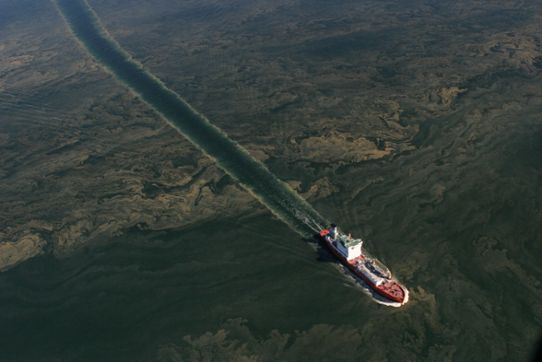
Strong sunlight and calm water – so that the sea surface is stable and doesn’t get mixed – provide good conditions for algal blooms. The algae also need nutrients such as nitrogen and phosphorus. Some types of algae can obtain nitrogen from the air and then only need the addition of phosphorus.
Nutrients such as phosphorus can be available as a result of human over-fertilisation but can also come from deep water which is naturally rich in nutrients and which can have moved up to the layer where the algae develop.
Some types of algal blooms seem to have increased in recent years, but there is no definite pattern and instead there are indications that algal blooms are periodic.
Algal blooms can occur at just about any time during the year, but the potentially dangerous blooms in the Baltic Sea are most common during the summer (July-August) and early autumn.
Advice for algal blooms
Algal blooms vary in colour and appearance depending on quantity and species. Blue-green algal blooms in the Baltic Sea usually appear as a green-yellow soup or a mass of blue-green threads. Toxicity varies between different species but can also vary within the same species.
Swimming in water can be fine if you are careful – don’t swallow any water and shower afterwards if possible. There is however always a risk of skin irritation and other problems.
The first symptoms of algal poisoning are similar for humans and animals: feeling generally unwell, vomiting, diarrhoea and possibly fever. Eyes and skin can also become irritated. Contact a doctor if you have any of these symptoms.
It usually takes more than a small mouthful of water to be ill, but be observant of any symptoms. For adults the risk of poisoning is low. Children, especially young children, are more likely to swallow water and should therefore be watched carefully or kept away from water with algal blooms.
Pets, farm animals and wild animals are more at risk of being affected by algal blooms. Animals that drink water containing algae can become seriously ill and can even die of poisoning. Pets with symptoms of poisoning should therefore be taken to a vet as soon as possible.
The algal poison is not affected by boiling, so don’t use water with algae for cooking. Some algal toxins can collect in mussels that eat plankton – this is a problem mainly on the West coast of Sweden.
SMHI monitors the algae situation
Since 2002 SMHI has been running the “Baltic Algal Watch System” which is a satellite-based observation system for blue-green (cyanobacteria) algal blooms in the Baltic Sea. Analysed satellite pictures provide a graphical presentation of the algae situation throughout the summer at smhi.se.
More information about algal blooms and the current algae situation can be found at the Marine Information Centres, see the external links on the right.